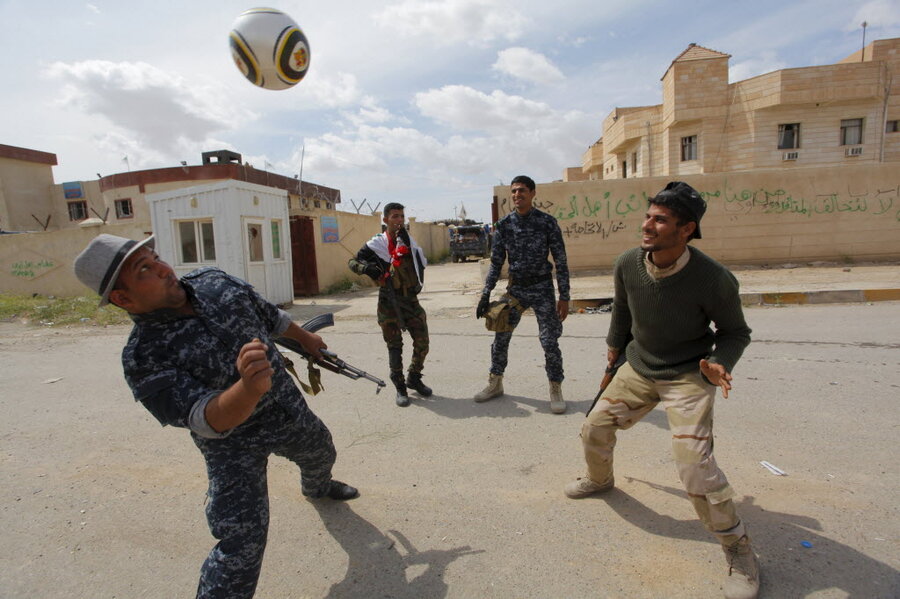Why the world is more at peace
Loading...
Before the Iraqi city of Tikrit was liberated from Islamic State militants in 2015, its tribal leaders were brought together by trained peace mediators. They forged a pact to rekindle the traditional bonds between Shiites and Sunnis in Tikrit. The key message: “Life can return.” Since then, most of the city’s displaced civilians have returned.
This reknitting of ties in a devastated city is just one reason why the world has enjoyed one of its most peaceful periods. Last year, according to the Global Peace Index released June 1, 93 countries recorded improvements in peace while 68 deteriorated. Using 23 indicators from homicide to military spending, the index found a 10 percent decline in deaths from terrorism and a 6 percent drop in armed conflicts. In two-thirds of the countries, the murder rate – the main cause of violent lethal death – went down.
The Middle East, of course, remains an outlier. Battle deaths in the region are the highest in a quarter century. And the number of refugees and displaced people, mainly from Syria and Yemen, is at a 60-year high – or 1 percent of the world’s population. In general, the 20 least peaceful countries have become more violent.
In sharp contrast, Iceland, New Zealand, and Portugal are the most peaceful countries, according to the index. Europe is the most peaceful region. The United States has slipped in part because its violent crime rate has risen in the past two years.
The index, along with other recent studies that confirm a long-term decline in violence, tries to track “positive peace,” or those ways of thinking and types of institutions that drive harmony, order, honesty, freedom, and justice.
In a recent talk, Nancy Lindborg, president of the United States Institute of Peace, said it is “blindingly clear that we need to think more about getting ahead of the conflict curve if we hope to address rising humanitarian and security challenges, so we’re not reacting after people’s lives have been torn apart.”
The causes of violence vary and are numerous. And scholars have long debated if humans are innately violent or peaceful. But Steven Pinker, the Harvard University scholar and author of the 2011 book “The Better Angels of Our Nature: Why Violence Has Declined,” says societies are becoming more “enmeshed” and seeking “a higher good,” resulting in less violence.
Building on his work, a team of Spanish scientists published a study in the journal Nature last year that found a marked drop in violence over the past 500 years. The research estimates about 2 percent of prehistoric humans died from violence. But as societies became better organized, and handed over the control of violence to police, courts, and elected officials, the rate has fallen far below 1 percent. They attribute the decline to better “cultural practices.”
The big shift, however, is a rise in understanding that war and violence are not inevitable and that pursuing peace – the active kind – is not a futile exercise. Places like Tikrit are more at peace because enough people practice those truths.







